Filter by
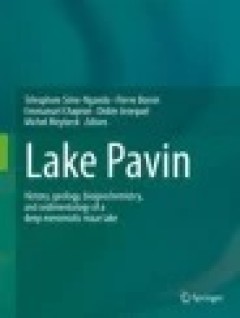
Lake Pavin: History, geology, biogeochemistry, and sedimentology of a deep me…
This book represents the first multidisciplinary scientific work on a deep volcanic maar lake in comparison with other similar temperate lakes. The syntheses of the main characteristics of Lake Pavin are, for the first time, set in a firmer footing comparative approach, encompassing regional, national, European and international aquatic science contexts. It is a unique lake because of its perma…
- Edition
- -
- ISBN/ISSN
- 978-3-319-39961-4
- Collation
- -
- Series Title
- -
- Call Number
- -
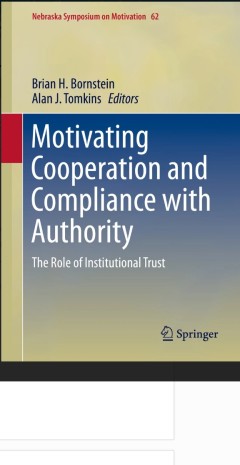
Motivating Cooperation and Compliance with Authority
This volume explores the various ways in which trust is thought about and studied in contemporary society. In doing so, it aims to advance both theoretical and methodological perspectives on trust. Trust is an important topic in this series because it raises issues of both motivation and emotion. Specifically, notions of trust and fairness motivate individuals to behave in a manner they deem ap…
- Edition
- 1
- ISBN/ISSN
- 978-3-319-16150-1
- Collation
- XIII, 220
- Series Title
- Nebraska Symposium on Motivation
- Call Number
- -

Everything You Wanted to Know About Data Analysis and Fitting but Were Afraid…
These notes describe how to average and fit numerical data that have been obtained either by simulation or measurement. Following an introduction on how to estimate various average values, they discuss how to determine error bars on those estimates, and how to proceed for combinations of measured values. Techniques for fitting data to a given set of models will be described in the second part o…
- Edition
- -
- ISBN/ISSN
- 978-3-319-19051-8
- Collation
- 4 b/w illustrations, 11 illustrations in colour
- Series Title
- -
- Call Number
- -
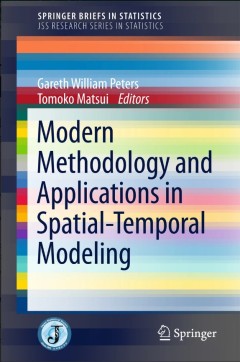
Modern Methodology and Applications in Spatial-Temporal Modeling
This book provides a modern introductory tutorial on specialized methodological and applied aspects of spatial and temporal modeling. The areas covered involve a range of topics which reflect the diversity of this domain of research across a number of quantitative disciplines. For instance, the first chapter deals with non-parametric Bayesian inference via a recently developed framework known a…
- Edition
- 1
- ISBN/ISSN
- 978-4-431-55338-0
- Collation
- XV
- Series Title
- SpringerBriefs in Statistics
- Call Number
- -
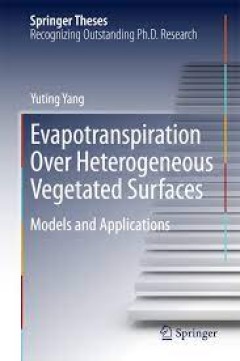
Evapotranspiration Over Heterogeneous Vegetated Surfaces Models and Applicat…
The focus of this work is the development of models to estimate evapotranspiration (ET), investigating the partitioning between soil evaporation and plant transpiration at field and regional scales, and calculating ET over heterogeneous vegetated surfaces. Different algorithms with varying complexities as well as spatial and temporal resolutions are developed to estimate evapotranspiration from…
- Edition
- -
- ISBN/ISSN
- 978-3-662-46173-0
- Collation
- 29 b/w illustrations, 36 illustrations in colour
- Series Title
- -
- Call Number
- -

Beach Renourishment
Beach renourishment is the restoration of beaches that have been depleted. The text deals with the sources of beach sediment as well as the causes and typical responses to beach erosion, before discussion of beach renourishment. Some of the first documented renourishment projects were undertaken in the early 1900’s on the east coast of the United States. Several countries have since renour…
- Edition
- -
- ISBN/ISSN
- 978-3-319-09728-2
- Collation
- IX, 137
- Series Title
- -
- Call Number
- 551.46
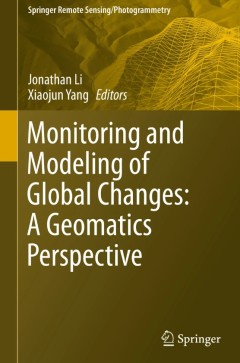
Monitoring and Modeling of Global Changes: A Geomatics Perspective
The chapters in this book present state-of-the-art geomatics technologies applied in global environmental studies. This text provides the latest research findings and delivers complete references to related publications. This book will motivate the undergraduate and graduate students, researchers and practitioners to better understand the environmental changes with informed solutions. Global…
- Edition
- 1
- ISBN/ISSN
- 978-94-017-9812-9
- Collation
- XI, 320
- Series Title
- Springer Remote Sensing/Photogrammetry
- Call Number
- -
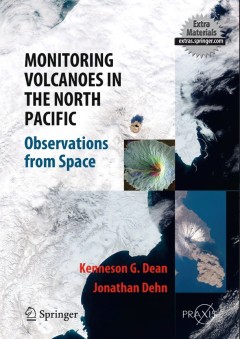
Monitoring Volcanoes in the North Pacific
This book provides a unique visual experience, showing satellite images of volcanic eruptions worldwide and detailed observations from the North Pacific ‘ring of fire’. Daily volcano monitoring and analysis from this region have resulted in one of the most detailed collections of satellite images in the world. An international team of experts has provided comprehensive cov…
- Edition
- 1
- ISBN/ISSN
- 978-3-540-24125-6
- Collation
- XXXIII, 363
- Series Title
- Springer Praxis Books
- Call Number
- -
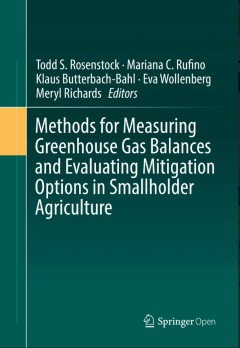
Methods for Measuring Greenhouse Gas Balances and Evaluating Mitigation Optio…
This book provides standards and guidelines for quantifying greenhouse gas emissions and removals in smallholder agricultural systems and comparing options for climate change mitigation based on emission reductions and livelihood trade-offs. Globally, agriculture is directly responsible for about 11% of annual greenhouse gas (GHG) emissions and induces an additional 17% through land use change,…
- Edition
- 1
- ISBN/ISSN
- 978-3-319-29792-7
- Collation
- XV, 203
- Series Title
- -
- Call Number
- -
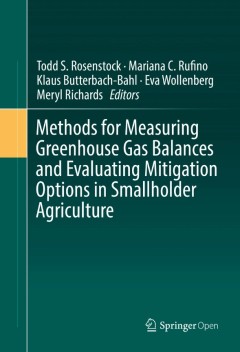
Methods for Measuring Greenhouse Gas Balances and Evaluating Mitigation Optio…
This book provides standards and guidelines for quantifying greenhouse gas emissions and removals in smallholder agricultural systems and comparing options for climate change mitigation based on emission reductions and livelihood trade-offs. Globally, agriculture is directly responsible for about 11% of annual greenhouse gas (GHG) emissions and induces an additional 17% through land use change,…
- Edition
- 1
- ISBN/ISSN
- 978-3-319-29792-7
- Collation
- XV, 203
- Series Title
- -
- Call Number
- -
 Computer Science, Information & General Works
Computer Science, Information & General Works  Philosophy & Psychology
Philosophy & Psychology  Religion
Religion  Social Sciences
Social Sciences  Language
Language  Pure Science
Pure Science  Applied Sciences
Applied Sciences  Art & Recreation
Art & Recreation  Literature
Literature  History & Geography
History & Geography